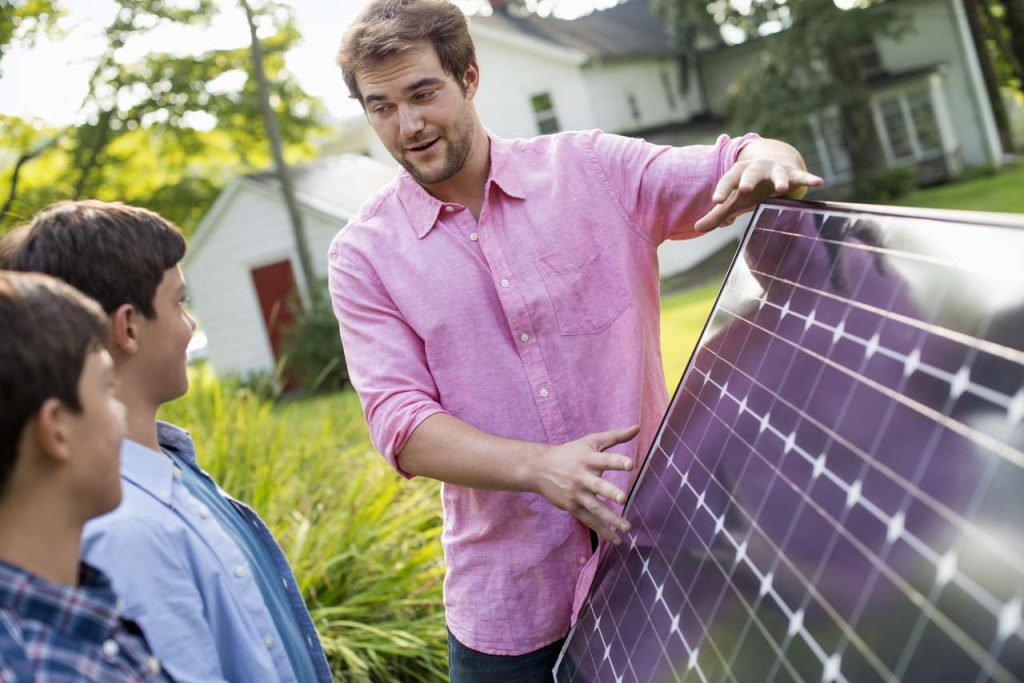Yes, it’s a true story. Excitement creates electricity. French physicist, Edmond Becquerel, first saw this in 1839. It is much like the expression when a group of excited people are gathered and they “can feel the electricity in the air”.
In the case of solar power, it is electrons that get excited. And why might you ask? Well, the sun’s rays contain energy – electromagnetic energy to be exact. This energy excites the electrons in certain materials.
Becquerel shone a light on an electrolyte solution and inserted two metal probes. Presto, an electric current was produced across the probes! This became known as the photovoltaic (PV) effect.
Scientists have shown that many different materials have this PV effect, but with most, less than 1% of the sunlight becomes electricity. Some just don’t get as excited as others! Then, in 1954, Bell Labs developed the first silicon solar cell with an efficiency of 6%.
When sunlight strikes a silicon solar cell its electrons become especially excited. Once excited enough, these electrons break free from the silicon molecule, and voila, they form an electric current.
With continued improvements in these silicon cells, the solar industry was born. The latest developments have brought their efficiency up to nearly 23%, while the manufacturing costs of solar cells continued to decline year over year through 2020. Then COVID, supply chain issues, raw material prices increases and inflation pressures recently took their toll on prices.
Stacking more expensive materials in a solar cell gives efficiencies of over 47%. However, their use is limited to spacecraft and satellites, where small size and light weight are vital, and costs are out of this world (pun intended)!
There are monocrystalline (MC) and polycrystalline (PC) solar panels, both made from pure silicon. MC panels are made from layers of a thinly sliced single ingot, while PC panels are made from silicon fragments, melted together, then thinly sliced and layered.
MC panels have higher power, work better in hot climates, and degrade slower, but are more expensive to make. PC panels have 10 – 20% less power, lose power twice as quickly with rising temperatures, and degrade faster resulting in five fewer years of life, but are less expensive to manufacture.
In our hot desert climate, MC panels are the better choice, unless a very inexpensive PC panel is found. Like the brand new smartphone, I picked up on eBay. A six-year-old model, with less battery life, lower memory, and an okay camera, but at $100 it meets my needs! Finding inexpensive, warrantied and guaranteed PC panels that are three years old, but have never been used, may provide a better economic return.
PC panels have a bluish tinge on a rooftop, while MC panels are black. Waste from MC panel manufacturing can be used to make PC panels, and both types can be recycled at the end of their life. So yes, PC panels use the MC leftovers making them especially green!
The PV effect is very simple, silicon plentiful and the panels have a long life, with no moving parts and little maintenance required. They convert free energy from the sun to electricity to provide a property’s power needs for 30+ years, after which, they can be recycled.
Now that’s something to get excited about!







